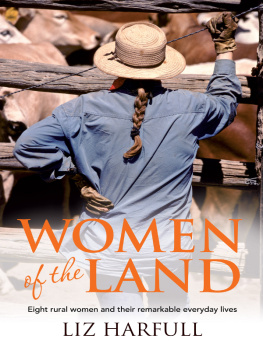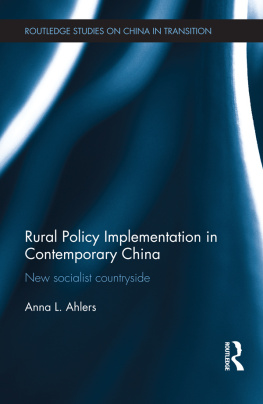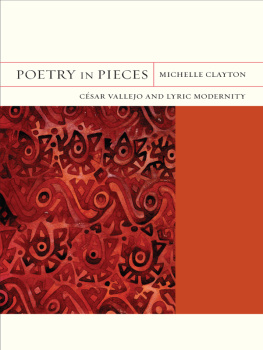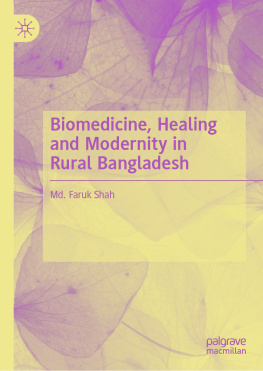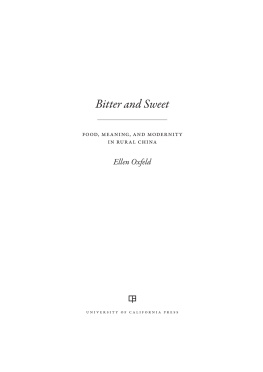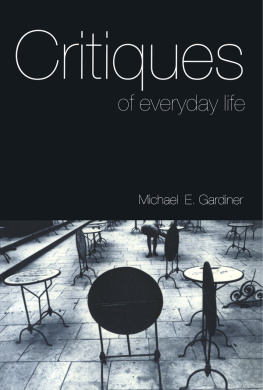RURAL MODERNITY, EVERYDAY LIFE AND VISUAL CULTURE
Rural Modernity, Everyday Life and Visual Culture
Rosemary Shirley
Manchester School of Art,
Manchester Metropolitan University, UK
ASHGATE
Rosemary Shirley 2015
All rights reserved. No part of this publication may be reproduced, stored in a retrieval system or transmitted in any form or by any means, electronic, mechanical, photocopying, recording or otherwise without the prior permission of the publisher.
Rosemary Shirley has asserted her right under the Copyright, Designs and Patents Act, 1988, to be identified as the author of this work.
Published by
Ashgate Publishing Limited
Wey Court East
Union Road
Farnham
Surrey, GU9 7PT
England
Ashgate Publishing Company
110 Cherry Street
Suite 3-1
Burlington, VT 05401-3818
USA
www.ashgate.com
British Library Cataloguing in Publication Data
A catalogue record for this book is available from the British Library
Library of Congress Cataloging-in-Publication Data
Shirley, Rosemary.
Rural modernity, everyday life and visual culture / by Rosemary Shirley.
pages cm
Includes bibliographical references and index.
ISBN 978-1-4724-3143-1 (hbk) -- ISBN 978-1-4724-3144-8 (ebook) -- ISBN 978-1-4724-3145-5 (epub) 1. England--Rural conditions. 2. England--Social life and customs. I. Title.
HN398.E5S53 2015
306.0942--dc23
2014046291
ISBN 9781472431431 (hbk)
ISBN 9781472431448 (ebk-PDF)
ISBN 9781472431455 (ebk-ePUB)
Contents
List of Illustrations
About the Author
Rosemary Shirley is a Senior Lecturer in Art History at Manchester School of Art, Manchester Metropolitan University. She has contributed chapters to Affective Landscapes in Literature, Art and Everyday Life (edited by Christine Berberich, Neil Campbell and Robert Hudson, 2015) and Transforming the Countryside (edited by Paul Brassley, Jeremy Burchardt and Karen Sayer, 2016). Her research centres on everyday life and visual cultures in historical and contemporary rural contexts.
Acknowledgements
I would like to offer my warmest thanks to Ben Highmore for his constant encouragement and support throughout this project. I am also grateful to the University of Sussex for their generous award of a Sussex Scholarship, to the Paul Mellon Centre for Studies in British Art for a Publication Grant, and to MIRIAD for a Research Support Grant.
The award for most patient husband goes to Nick, who I need to thank for so much, not least for his excellent bibliographic skills. Id also like to thank my parents for their understanding and humour.
I am grateful to Joanne Lee and Claire Langhamer for their invaluable feedback, and for fascinating conversations, camaraderie and inspiration. I thank Linda Berkvens, Catherine Bate, Cameron Catiere, Sally Davies, Melanie Rose, Neeta Madahar, and James Wilkes. Thanks also go to my friends and colleagues at Manchester School of Art.
For their expertise and generosity in lending scrapbooks I thank Ann Mattingly, archivist at WI House, Winchester and the members of Micheldever and Radwinter WIs. Thanks to the National Federation of Womens Institutes for their permission to quote from their archival documents and to Hampshire WI for permission to reproduce elements from the Binsted Scrapbook. In addition, I would like to thank the staff at the following collections: East Sussex County Archive, Hampshire County Archive, Shell Art Collection, Beaulieu, in particular Nicky Balfour, and Winchester School of Art Library, University of Southampton.
Quotes from the litter trails documents in
1
Introduction: Beating the Bounds
In his publication Once a Year (1977), Homer Sykes, photographer and chronicler of the strange folk festivals practised over the British Isles, documents the Beating of the Bounds ceremony that takes place each year in Oxford. On Ascension Day (40 days after Easter Sunday) the parish priest of St. Michaels church, the choir boys, the choir master and the parishioners gather together to perform the ancient ritual. Armed with long garden canes the type used for keeping runner beans upright they rain down blows on each of the 22 stones which mark the parish boundary.

1.1 Beating the Bounds, Oxford, 1977. Homer Sykes.
Taking place in spring time, the festival has pre-Christian agrarian roots, marking the change in season and providing the opportunity for symbolic or actual sacrifices to be made to ensure a fruitful growing season and harvest. In a time before parishes were established, this simply meant walking the fields. Early in its history the Christian church began to tie its activities closely to the agricultural calendar adopting seasonal festivals as their own. In his study of such festivals, Ronald Hutton shows that in eighth century England the early Christian church began to regulate these often exuberant events, prohibiting any accompanying feasting and games and decreeing that participants should instead walk exhibiting their fear and reverence towards God (Hutton 1996: p. 277). It was at this time that they were given the name Rogations from the Latin rogare to ask a request to God for a good harvest and a blessing of the fields.
Such festivals also had a very real secular purpose to do with the everyday administration of the parish. In the sixteenth century parishioners became liable for certain taxes and financial duties payable to the parish and so it became important that boundaries be understood and maintained. Before most people had access to maps or the education necessary to read them, these boundaries were learnt through Rogationtide perambulations, with the brutally eccentric addition of actual beatings to ensure the younger members of the congregation were paying attention. W.E. Tate in his classic history of parochial administration, The Parish Chest (1983 [1946]), reveals that the practice of beating the bounds did not only refer to the beating of boundary stones but also of boys. Documents from the parish of Tunworth in Dorset show that in 1747 the ceremony included Whipping ye boys by way of remembrance, and stopping their cry with some half-pence (Tate 1983 [1946]: p. 74). The idea being that having ones head hit against a stone, or in this case being beaten at the site of a stone, would instil a memory of its location and ensure the knowledge of the parish boundaries was passed on to future generations.
Varied and elaborate customs that demarcate the boundaries of a place continue to be enacted in many parts of the country. While their purpose is to mark boundaries, these festivals can also have the effect of upsetting clear delineation. Temporal and conceptual boundaries between the country and the city and the ancient and the modern are shown to be mutable in festivals of this kind. In a very practical way these disturbances can be felt at the Oxford ceremony in the logistics of accessing the stones. Over the 600 years in which this ceremony has been performed the boundary markers have borne witness to centuries of civic development, deconstruction and reconstruction, meaning that they no longer simply lie in open ground but have to be searched out in shops, cellars, private property and even under the carpet of the Roebuck Inn. While the boundaries of the parish may have remained constant, the boundaries between country and city have become less distinct, and beating the bounds requires a complex negotiation of ancient markers, overlaid with modern developments, which in turn become venues for these ancient practices.
Next page

